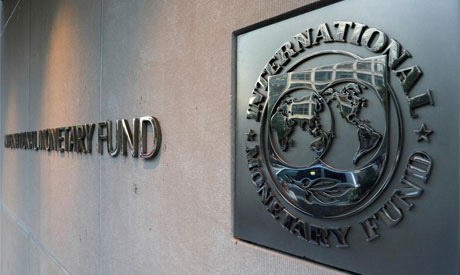
File Photo: International Monetary Fund (IMF) logo (Photo: Reuters)
The International Monetary Fund (IMF) has revealed that portfolio and bank inflows to the Middle East surged to more than $155 billion in the period between 2016 and 2018, which accounts for around 20 percent of total portfolio flows to emerging economies during these two years, while it was three times the volume of flows to MENA countries over the previous eight years.
Global risk sentiment played a role
According to an IMF report, two-thirds of this sharp increase is attributed to a more favorable global risk sentiment that is notably below its historical average. In addition, large fiscal and external deficits caused by increased spending in countries like Egypt, Jordan, Lebanon, and Tunisia have contributed to this surge.
"Capital inflows have helped governments finance these deficits. The recent inclusion of Gulf Cooperation Council countries—Bahrain, Kuwait, Oman, Qatar, Saudi Arabia, and the United Arab Emirates, in global bond and equity signs has also been a factor contributing to the rise in portfolio flows to the region," the report said.
MENA region has benefited significantly
The MENA region has benefited significantly from this surge in inflows, the report said. However, with global economic risks now on the rise, MENA countries would be particularly vulnerable if global risk sentiment shifts, especially those with large fiscal deficits, high debt burdens, and limited buffers.
Portfolio inflows to the region are nearly twice as sensitive to changes in global risk sentiment as compared with other emerging economies, which could lead to capital flight during high-risk periods. This sensitivity most likely stems from the higher perceived overall risk of the region, reflecting geopolitical uncertainties, reliance on volatile oil prices, and exposure to global trade tensions, according the report.
Dealing with these serious challenges, MENA countries have to adopt improved policy frameworks to attract and preserve capital flows, while helping mitigate the risk of outflows.
Egypt among countries that targeted inflation
The report pointed out Egypt has taken important steps in establishing inflation targeting, while Morocco and Pakistan have made progress in allowing more flexible exchange rates, asserting that ensuring stable macroeconomic conditions by reducing fiscal deficits will be critical to insulating the region’s countries from capital flow volatility.
The report also said that countries are in need of implementing certain key structural reforms, including measures to strengthen fiscal supervision and regulation as well as enhance or develop sound macro prudential toolkits to improve the capacity of the financial system to safely intermediate cross-border flows.
Meanwhile, the report called on the region's countries to embark on building resilience to the prospect of large stocks of foreign equity and bonds in accordance with the size of their economies. By further developing domestic capital markets, including through the establishment of a well-functioning government bond market, governments would encourage a more stable domestic investor base, improve competition, and foster corporate debt markets.
Short link: